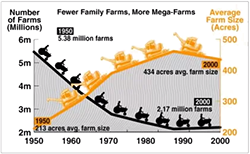Smart Farming: Alum Cooks Up Code and Fresh Produce in New Startup
-
-
slice.mit.edu
Filed Under
Recommended
Dan Chak '02 thinks he has a great algorithm for determining how to most efficiently get good produce from California farms to the best California restaurants.

With demand for “low-mileage” food sources growing, along with consumers’ increasing tastes for all things organic, restaurants in Los Angeles often had to call five or ten farmers to satisfy orders for a week’s worth of produce needs.
Using Chak’s software, launched earlier this month through his company Small Farm Fresh, chefs register their restaurant then log in to place an order as needed. The site’s interface lists quantities of carrots, lettuce, and so forth available that week from several local farms who have signed up for the directory. Farmers deliver their produce to the restaurants via the traditional farmers' market, which, as Chak puts it, "acts as a natural aggregation point."
Like Amazon.com, where Chak previously worked as a software engineer, Small Farm Fresh aims to become a portal through which producers and consumers connect with few or no warehouses in between.
The results of Chak’s pilot test were convincing enough for him to proceed to a full launch in southern California. With more than 30 local farms participating, Chak’s software now links inventory to demand in a useful way.
“I started Small Farm Fresh because right now, it's harder to buy locally grown produce than it is to buy produce that was grown thousands of miles away,” writes Chak. “Even if big companies can make the numbers work to sell produce this way, these excessive food miles are bad for the environment, bad for local farmers, and ultimately, bad for consumers. We get anonymous food that isn't as fresh as it could be when amazing produce is grown next door.”







